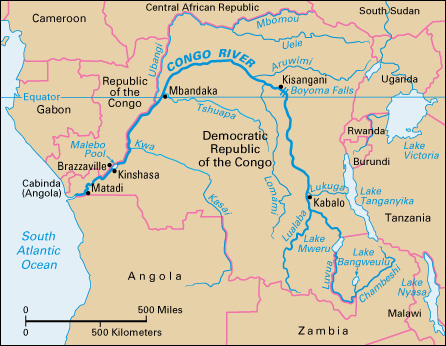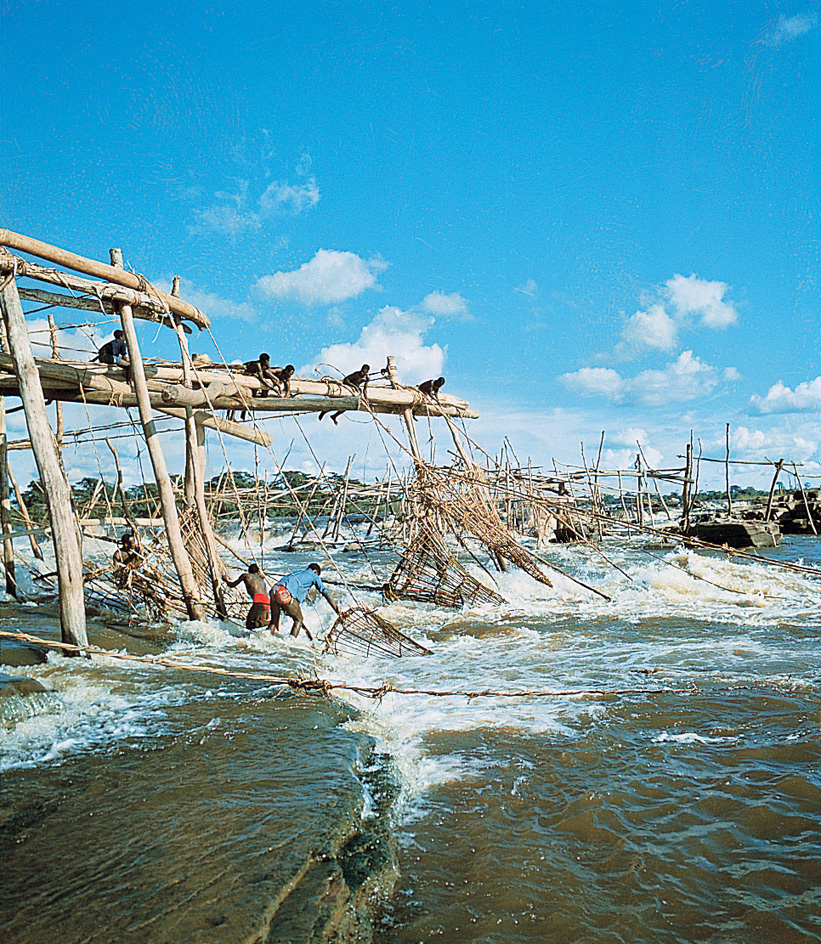Congo River is the fifth longest river in the world. It flows 2,900 miles (4,667 kilometers) through west-central Africa. It carries more water than any river except the Amazon. The Congo River drains an area of about 1,400,000 square miles (3,630,000 square kilometers).

The Congo River begins south of Kabalo in the Democratic Republic of the Congo (DRC), where the Lualaba and the Luvua rivers meet. From this point until Boyoma Falls, the river is often called the Lualaba. After it passes over Boyoma Falls near Kisangani in the DRC, the river is called the Congo.
Near Boyoma Falls, the river turns westward and flows across the northern DRC. Several major rivers, including the Aruwimi, Lomami, and Ubangi, empty into the Congo. Near Mbandaka in the DRC, the Congo turns southwestward. It then forms the border between the DRC and the Republic of the Congo for about 500 miles (800 kilometers). The Kasai River joins the Congo about 300 miles (480 kilometers) southwest of Mbandaka. Near Kinshasa, the Congo widens, creating a lake called Malebo Pool. The river then drops about 800 feet (240 meters) as it forms a series of 30 waterfalls between Kinshasa and Matadi in the DRC. The Congo empties into the Atlantic Ocean about 90 miles (140 kilometers) west of Matadi.

Unlike the Mississippi and the Nile, the Congo River has no delta. The Congo’s muddy waters flow into a deep trench that extends far into the Atlantic Ocean.
The Congo is the main waterway of the DRC. Commercial ships use the river between the Atlantic and Matadi and between Kinshasa and Kisangani. The river serves as a major transportation route for the people of the DRC, especially in areas that have few good roads. Rapids prevent navigation in some parts of the upper Congo.
In 1483, the Portuguese navigator Diogo Cão became the first European to reach the mouth of the Congo. Portuguese settlers established an outpost on the southern shore of the river near the Atlantic Ocean in the 1490’s. But Europeans knew little about the rest of the river until after the British explorer Sir Henry M. Stanley completed an expedition from its source to its mouth in 1877.
